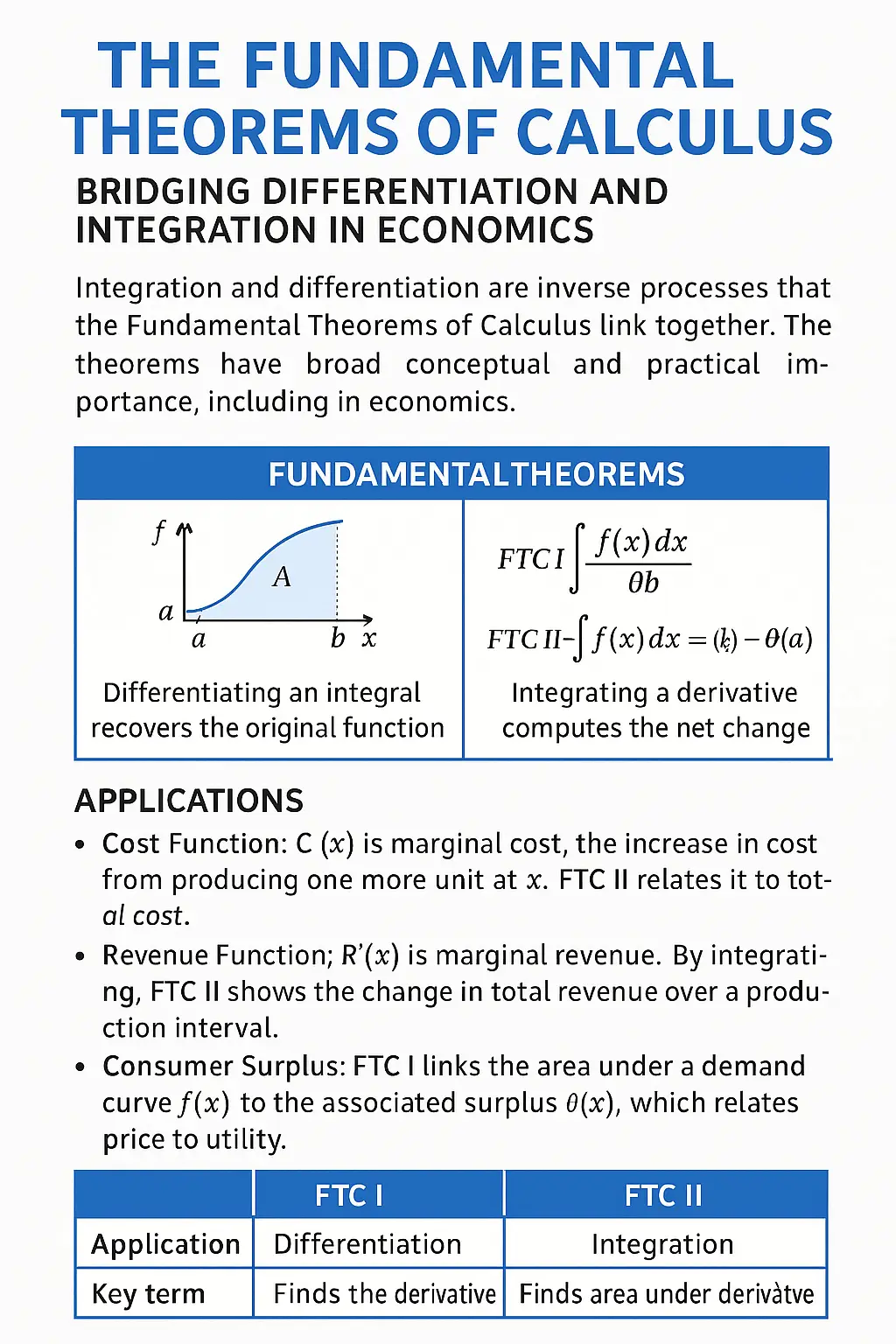Introduction
In the landscape of mathematical analysis, few results are as profound and practically useful as the Fundamental Theorems of Calculus (FTC). These theorems serve as the bridge between the two major pillars of calculus: differentiation and integration. In economic modeling, they clarify how marginal functions relate to total quantities and explain how dynamic change is connected to cumulative outcomes.
This article provides an intuitive and formal explanation of both parts of the Fundamental Theorem of Calculus, along with economic applications that make them indispensable to analysts and students.
1. Differentiation and Integration: Two Sides of the Same Coin
Differentiation answers the question: How fast is something changing? (e.g., marginal cost)
Integration answers: What is the total accumulated effect of all those changes? (e.g., total cost)
The Fundamental Theorems formally link these two perspectives.
2. The First Fundamental Theorem of Calculus (FTC I)
Statement:
If is continuous on , and:
Then:
Interpretation:
Differentiating an integral returns the original function. If is a rate (e.g., marginal revenue), then is the total revenue, and its derivative is again the marginal value.
Economic Relevance:
- Marginal cost is the derivative of total cost
- Integrating from 0 to gives , and differentiating that integral returns
3. The Second Fundamental Theorem of Calculus (FTC II)
Statement:
If is continuous on and is any antiderivative of , then:
Interpretation:
The total accumulated change of over is the difference in the values of its antiderivative .
Economic Example:
Let
Then:
So the total cost of producing units equals the area under , calculated via FTC II.
4. Visual Intuition
FTC I: Think of as the area-so-far. Its derivative is the rate at which area is being added — i.e., the value of the original function .
FTC II: The total area under between and is just the difference .
5. Practical Uses in Economics
- Forecasting: Projecting total cost or revenue based on marginal values
- Surplus Calculation: Integrating demand/supply and evaluating over intervals
- Comparative Statics: Understanding how small changes affect totals
Whether calculating net benefits or total utility, the FTC simplifies otherwise lengthy computations.
6. Conceptual Summary
| Concept | FTC I | FTC II |
|---|---|---|
| Links… | Integral to derivative | Derivative to integral |
| Core idea | Rate of area growth is height | Total area = change in antiderivative |
| In economics | Marginal from total | Total from marginal |
Conclusion
The Fundamental Theorems of Calculus connect two central ideas — rates and totals — into a powerful analytical tool. In economics, they enable clear interpretations of marginal values, streamline the computation of total quantities, and support visual, geometric, and functional reasoning across a wide range of models.
Mastering these theorems equips economists and students with the foundation to analyze systems more effectively, predict outcomes, and draw sound conclusions from dynamic data.
Further Reading
- Stewart, J. Calculus: Early Transcendentals
- Chiang & Wainwright, Fundamental Methods of Mathematical Economics

